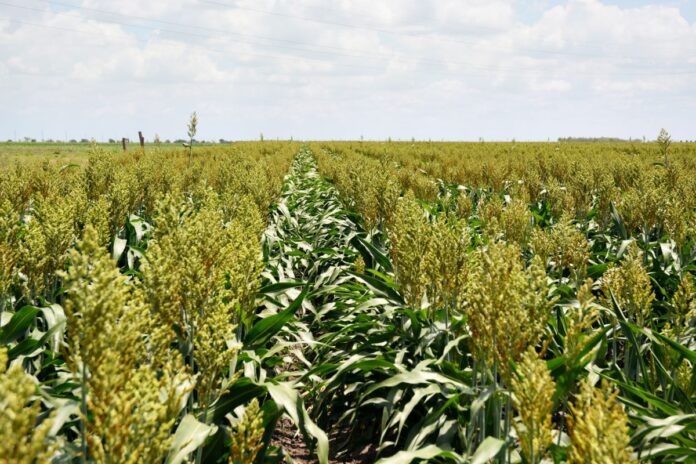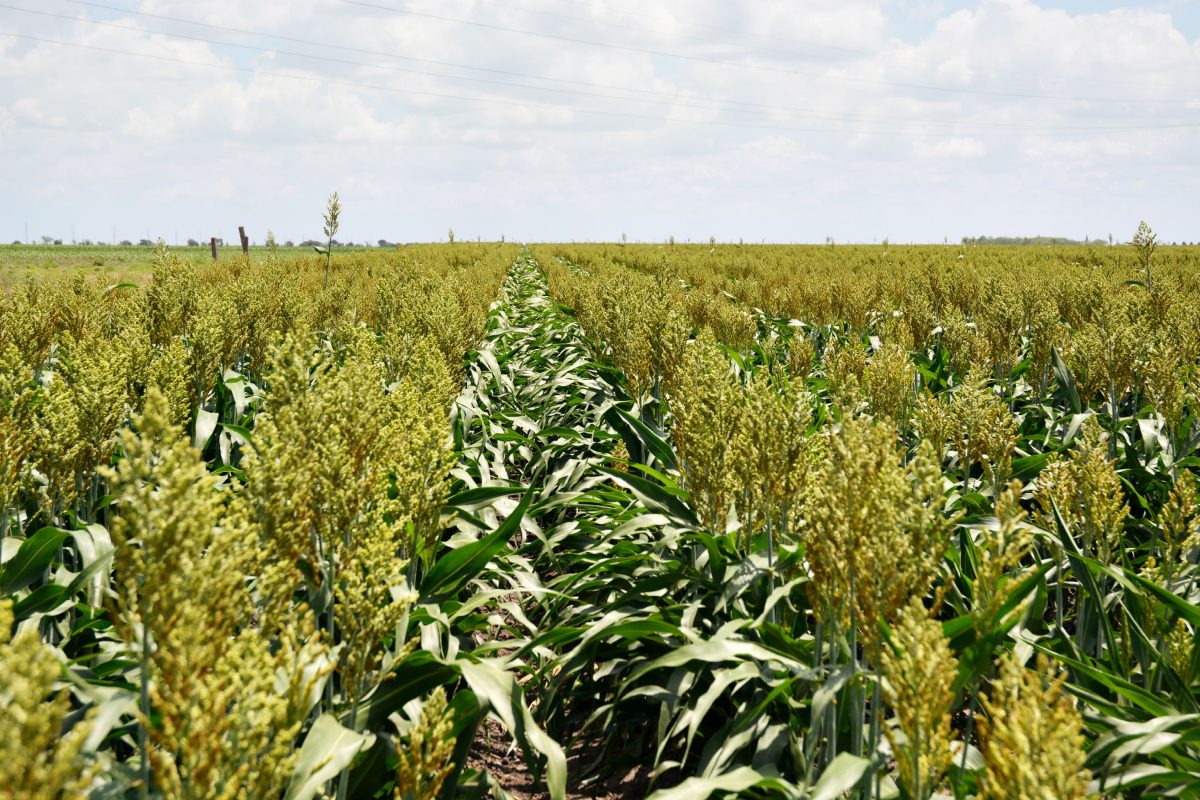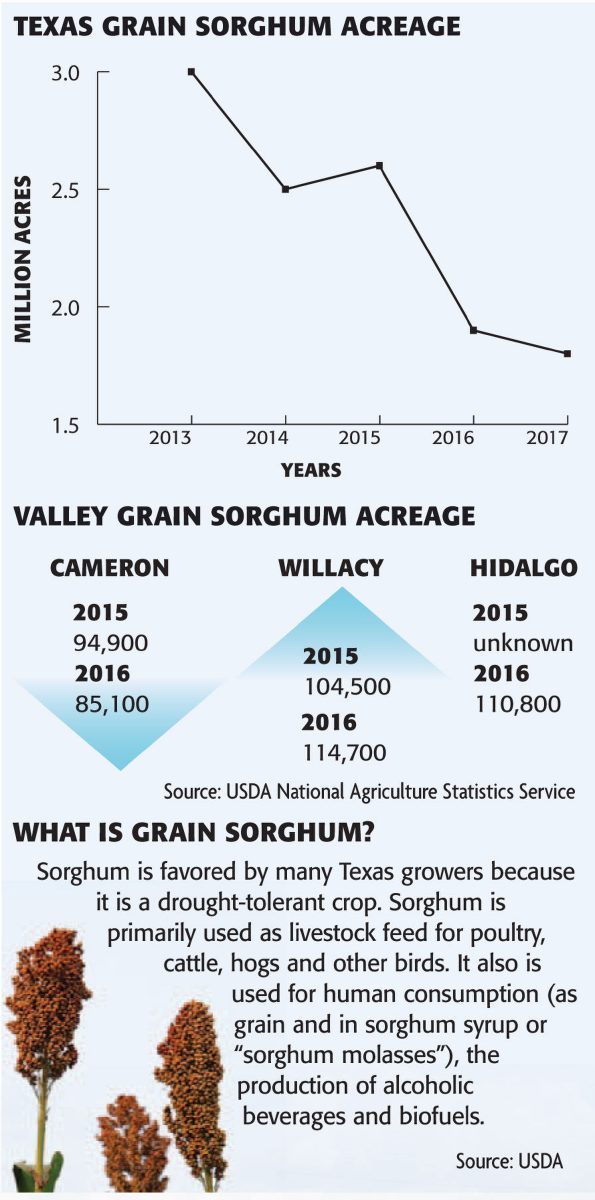HARLINGEN — Valley grain growers have weathered the sugarcane aphid storm, and if planted acreage is an indicator, they’re not shying away from the fight.
The sugarcane aphid is a serious pest to grain sorghum, which by acreage is the Rio Grande Valley’s biggest crop, ahead of cotton, sugar cane and corn.
This year won’t be an exception.
“It’s our fifth year with this invasive pest, so I have a lot of growers who sprayed prior to irrigation and a lot of fields look really clean,” said Danielle Sekula-Ortiz, a pest management specialist with TAMU AgriLife Extension Service in Weslaco.
“But others haven’t sprayed yet and the (aphid) numbers took off so they’re trying to get in and spray and are doing something now,” she added.
There was speculation that given the cost of $15 to $30 per acre when applying pesticides like Transform and Sivanto that sorghum acreage would drop significantly this year in the Valley, which generally plants between 300,000 and 330,000 acres in sorghum.
“In the Valley, cotton and corn acreage went up this year a lot,” Sekula-Ortiz said. “There’s a lot of corn this year so that took away a little from the grain sorghum. But that’s good, too, with the guys rotating their crops.”
Texas is expected to plant 1.8 million acres of grain sorghum in 2017, which is down about 5 percent from the previous year, according to a U.S. Department of Agriculture forecast. Only Kansas plants more, with 2.5 million acres forecast this year.
Yet Wayne Cleveland, executive director of Texas Sorghum Producers, is more optimistic. He says Texas growers could plant 2 million acres this season.
“China coming into the market had a huge effect on our acres,” Cleveland told Texas Farm Bureau. “What we’re seeing today is some of China leaving the market, as well as a more robust price for cotton, which competes for acres with sorghum.”
China has put more of its agricultural land into sorghum. China buys about 80 percent of the U.S. grain sorghum crop as poultry and livestock feed.
Another big effect on Valley grain growers this year has been the weather.
“The only difference this year is we did have an unseasonably warm February,” Sekula-Ortiz said. “Usually in February we average four cold fronts and nights in the 40s, and that just didn’t happen this year.
“Everybody wants to plant early, but everybody planted ridiculously early this year,” she said.
Grain sorghum generally is harvested in the Valley in mid-June. But this year’s early jump on the season will allow most growers to harvest in mid-May.
Sekula-Ortiz said that after five years of dealing with the sugarcane aphid problem, sorghum growers in the Valley are a lot savvier about fighting off the pest, which can reduce grain yields and clog harvesting equipment with the sticky “honeydew” the bugs secrete.
“Over the years we’ve learned which (sorghum) hybrids are tolerant,” Sekula-Ortiz said. “They’re not going to be resistant, and that’s why we need to spray. But we do have quite a few varieties that are tolerant.
“As long as these guys know they’re going to have to spray at least once, they generally get some good yields,” she added. “I’m very proud of my growers.”






